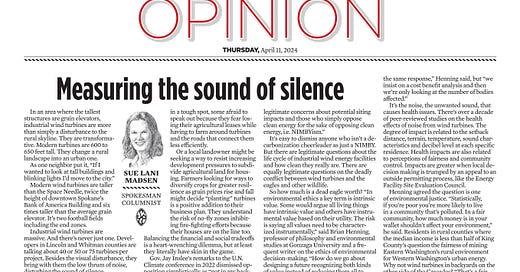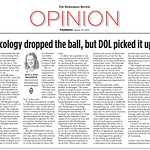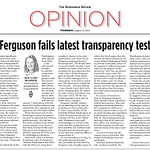A first test of the Substack audio recording option for podcasting, appropriate since last week’s column focused on soundscapes as one element in the complex trade-offs involved in siting industrial wind facilities in rural counties. It’s a political landscape where the phrase environmental justice appropriately describes the challenges in balancing negative impacts (on rural quality of life, human health, wildlife, the health of the soil ecosystem and water cycles, electrical grid instability, etc) with hoped for positive impact of producing clean(er) electrical energy and a new non-farm income sources for farmers.
REFERENCES:
Original column: https://www.spokesman.com/stories/2024/apr/11/sue-lani-madsen-measuring-the-sound-of-silence/ (This story on line has an Editor’s note: This story has been updated to correct the year in which the Energy Facility Site Evaluation Council was started. Instead of 2022, I had typed 2002. Obviously not corrected in the clipping.)
Development on public lands: https://thehill.com/policy/energy-environment/4589251-wind-solar-public-lands-costs-cut/
Bird deaths and industrial wind: https://cowboystatedaily.com/2024/04/05/meet-the-expert-on-turbine-eagle-deaths-the-wind-energy-industry-turned-on/
Inslee remarks at UN Climate conference: https://www.capitalpress.com/climate_changed/on-world-stage-inslee-decries-nimbyism-in-washington/article_d7fdc7b6-644e-11ed-b537-3b8086574b54.html
Median incomes: https://ofm.wa.gov/washington-data-research/economy-and-labor-force/median-household-income-estimates
Value of tax credits: https://www.forbes.com/sites/christinemcdaniel/2023/03/08/the-costs-of-wind-production-tax-credits-provided-in-the-ira/?sh=4a40619e5ff7
From broad meta-analysis: https://www.ncbi.nlm.nih.gov/pmc/articles/PMC8430592/
“There is evidence that sleep disturbance is associated with annoyance rather than to WT sound above a certain level. New evidence shows an association between total annoyance and health complaints, but we cannot draw conclusions about the direction of this relationship. The moderate effect of WT sound on annoyance and the range of factors predicting the levels of annoyance implies that reducing the impact of WT sound will profit from considering other aspects associated with annoyance. The relevance of factors such as participation in the planning process, procedural justice, feelings of fairness and balance of costs and benefits from WTs is strongly supported by current evidence. In summary: the health complaints are primarily associated with a range of contextual and personal factors rather than actual sound exposure levels.”
Note: This conclusion supports why planning and permitting decisions made by stepping over local planning and community interests to use the state EFSEC is counterproductive if your goal is to promote wind energy. Something that Gov. Inslee would have been wise to heed before vetoing legislation described below that would have increased local participation.
Governor’s Veto on EFSEC/rural collaboration: https://marydye.houserepublicans.wa.gov/2022/03/25/vetoes-change-landscape/














Share this post